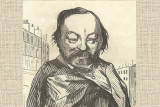Bringing together linguists and literary scholars, UNamur's Institute of Language, Text and Transmediality provides a platform for interdisciplinary diachronic and synchronic research into the multiple ways in which different types of verbal and multimodal communicative practices manifest themselves in, give shape to, are regulated by and reflect culture and society.
Points forts
NaLTT réunit des chercheurs spécialisés dans l’étude des attitudes, des contacts et des conflits linguistiques, de la politique et de la planification linguistiques, du discours rapporté et de l’expression du point de vue, ainsi que dans l’étude de la multimodalité. L’analyse linguistique des langues signées sur des données de corpus constitue l’une des originalités de NaLTT au sein du LSFB Lab.
Dans le domaine littéraire, NaLTT fédère les travaux de spécialistes des biographies littéraires, de la théorie de la littérature, de la littérature du Moyen Âge, de la littérature missionnaire, de l’édition de textes, de la sociologie de la littérature et de la théorie de la traduction.
NaLTT propose aux doctorants un environnement de recherche stimulant et convivial. Il se veut un incitant pour le développement des collaborations entre chercheurs juniors et seniors et un espace de formation (continue) à la recherche.
Spotlight
News
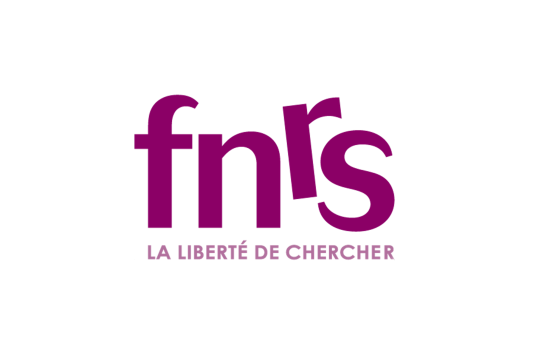
28 new research projects funded by the FNRS
28 new research projects funded by the FNRS
The F.R.S.-FNRS has just published the results of its various 2025 calls for proposals. These include the "Credits & Projects" and "WelCHANGE" calls, as well as the "FRIA" (Fund for Research Training in Industry and Agriculture) and "FRESH" (Fund for Research in the Humanities) calls, which aim to support doctoral theses. What are the results for UNamur? Twenty-eight projects have been selected, demonstrating the quality and richness of research at UNamur.
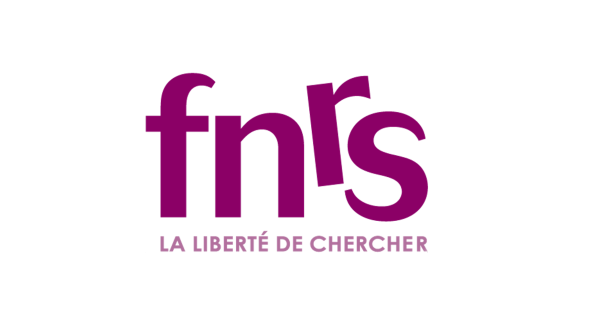
The "Credits & Projects" call for proposals resulted in 12 grants being awarded for ambitious new projects. These include two "equipment" grants, eight "research credits (CDR)" grants, and two "research projects (PDR)" grants, one of which is in collaboration with the ULB. The FRIA call for doctoral research support will fund eleven doctoral scholarships and the FRESH call will fund three.
Two prestigious Scientific Impulse Mandates (MIS) were also obtained. This three-year funding supports young permanent researchers who wish to develop an original and innovative research program by acquiring scientific autonomy within their department.
We would also like to highlight the two projects funded under the "WelCHANGE" call, a funding instrument for research projects with potential societal impact, led by a principal investigator in the humanities and social sciences.
Detailed results
Call for Equipment
- Xavier De Bolle, Narilis Institute, Co-promoter in collaboration with UCLouvain
- Luca Fusaro, NISM Institute
Call for Research Grants (CDR)
- Marc Hennequart, NARILIS Institute
- Nicolas Gillet, NARILIS Institute
- Jean-Yves Matroule, NARILIS Institute
- Patricia Renard, NARILIS Institute
- Francesco Renzi, NARILIS Institute
- Stéphane Vincent, NISM Institute
- Laurence Meurant, NaLTT Institute
- Emma-Louise Silva, NaLTT Institute
Call for Research Projects (PDR)
- Jérémy Dodeigne, Transitions Institute, Co-supervisor in collaboration with ULB
- Luc Henrard, NISM Institute; Co-supervisor: Yoann Olivier, NISM Institute
Fund for Training in Research in Industry and Agriculture (FRIA)
- Emma Bongiovanni - Supervisor: Catherine Michaux, NISM Institute
- Simon Chabot - Supervisor: Carine Michiels, Narilis Institute; Co-supervisor: Anne-Catherine Heuskin, Narilis Institute
- Lee Denis - Supervisor: Muriel Lepère, ILEE Institute
- Maé Desclez - Supervisor: Johan Yans, ILEE Institute; Co-supervisor: Hamed Pourkhorsandi (University of Toulouse)
- Pierre Lombard - Supervisor: Benoît Muylkens, Narilis Institute; Co-supervisor: Damien Coupeau, Narilis Institute
- Amandine Pecquet - Supervisor: Nicolas Gillet, Narilis Institute; Co-supervisor: Damien Coupeau, Narilis Institute
- Kilian Petit - Supervisor: Henri-François Renard, Narilis Institute; Co-supervisor: Xavier De Bolle, Narilis Institute
- Simon Rouxhet - Supervisor: Catherine Michaux, NISM Institute; Co-supervisor: Nicolas Gillet, Narilis Institute
- William Soulié - Supervisor: Yoann Olivier, NISM Institute
- Elisabeth Wanlin - Supervisor: Xavier De Bolle, Narilis Institute
- Laura Willam - Supervisor: Frédérik De Laender, ILEE Institute
Fund for Research in the Humanities (FRESH)
- Louis Droussin - Supervisor: Arthur Borriello, Transitions Institute; Co-supervisor: Vincent Jacquet, Transitions Institute
- Nicolas Larrea Avila - Supervisor: Guilhem Cassan, DeFIPP Institute
- Victor Sluyters – Supervisor: Wafa Hammedi, NADI Institute
- Amandine Leboutte - Co-supervisor: Erika Wauthia (UMons); Co-supervisor: Cédric Vanhoolandt, IRDENa Institute.
Scientific Impulse Mandate (MIS)
- Charlotte Beaudart, Narilis Institute
- Eli Thoré ILEE Institute
WelCHANGE Call
- Nathalie Burnay Transitions Institute, in collaboration with UCLouvain
- Catherine Guirkinger, DeFIPP Institute
Congratulations to all!
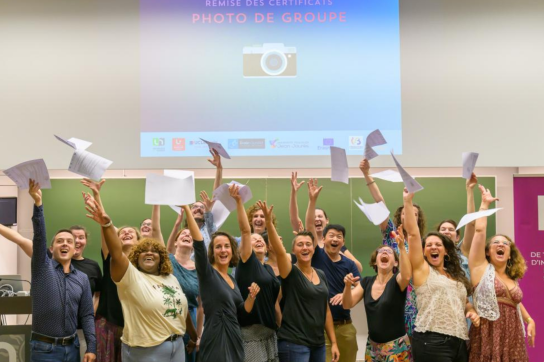
UNamur and UCLouvain win awards for sign language training
UNamur and UCLouvain win awards for sign language training
This is a great reward for the Interuniversity Certificate in Sign Language and French: it has just been distinguished by the European Innovative Teaching Award (EITA) in the "European Language Label" category.
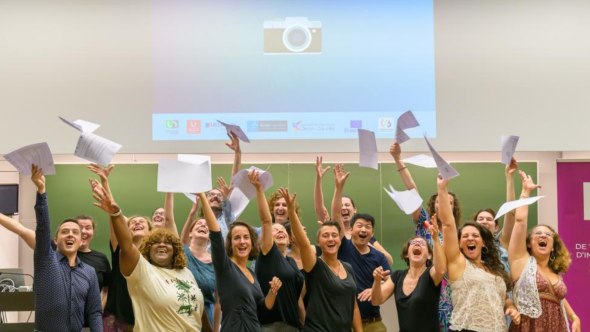
This prestigious prize, awarded by the European Commission, recognizes educational projects that promote innovative, inclusive and collaborative teaching practices. In 2025, only 117 projects were selected across Europe, including three in the Wallonia-Brussels Federation.
The award-winning project concerns the Certificat interuniversitaire en Langue des signes de Belgique francophone (LSFB) et français, co-organized by UNamur and UCLouvain Saint-Louis Bruxelles and supported by the Université de Toulouse Jean Jaurès (UTJJ) thanks to Erasmus+ funding. Running from September 2023 to June 2024, it aims to professionalize deaf interpreters in French-speaking Belgium and France, by offering them a unique training course leading to certification. Thanks to an innovative pedagogical approach, combining formal, non-formal and informal learning, 19 deaf adults were able to obtain certification, strengthening their professional recognition and role in society.
"We implemented this certificate because of the urgency and need to develop continuing education for deaf interpreters in French-speaking Belgium and the necessary reflection on the new profession of deaf interpreter in France," emphasizes Professor Dany Etienne (UCLouvain Saint-Louis Bruxelles), Dean of the Marie Haps Faculty of Translation and Interpreting.
"Deaf interpreters in Belgium are often self-trained, with no official recognition, which limits their professionalization and affects the services offered to deaf people. By integrating knowledge and tools from other universities, we have been able to develop suitable training, guaranteeing professionalism and ethics, in order to improve the quality of interpreting services and encourage recognition of the profession," adds Professor Laurence Meurant (UNamur).
This project thus marks a first in Belgium and France, filling a major gap in the training of deaf interpreters. It paves the way for better quality interpreting services and official recognition of the profession.
An exemplary university collaboration
The complementary expertise of the three partners has enabled the development of a unique training program of excellence:
- The research into the linguistic study of LSFB at UNamur conducted in collaboration with the ASBL École et surdité and the Centre scolaire Sainte-Marie Namur.
- Research and practice in the field of co-interpretation for UCLouvain Saint-Louis Bruxelles.
- Translation didactics for UTJJ.
This collaborative work has made it possible to develop tailor-made modules, adapted to the specific needs of deaf learners, and to create transnational links with experts in the UK, USA and Germany.
Find out more
- About the certificate in Interuniversity Certificate in Sign Language of French-speaking Belgium (LSFB) and French
- About the Laboratoire de langue des signes de Belgique francophone (LSFB-Lab)
- On the French-LSFB bilingual dictionary
This is also a project to support ! More info: https://unamur.be/fr/soutenir/lsfb
This project was made possible thanks to co-financing from the European Union.
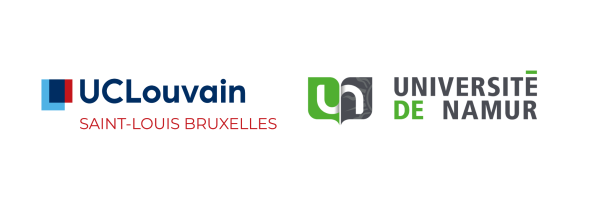
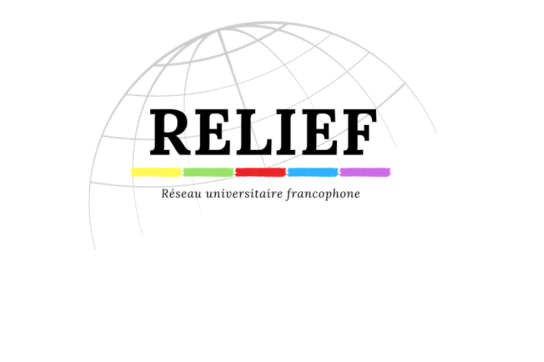
UNamur active in the Relief network: new collaborations planned
UNamur active in the Relief network: new collaborations planned
It's official: the University of Namur joins the Réseau d'Échanges et de Liaisons entre Institutions d'Enseignement Supérieur Francophones (RELIEF). It thus becomes the fourth partner in this network, alongside the Université du Québec à Trois-Rivières (UQTR), the Université Savoie Mont Blanc and the Haute École Spécialisée de Suisse Occidentale (HES-SO).
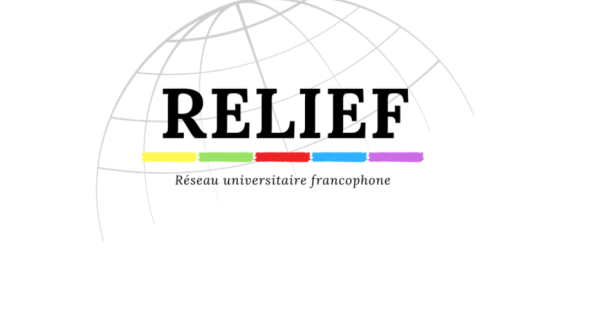
In late October, Rector Annick Castiaux, accompanied by Vice-Rector for International Relations and Cooperation Stéphane Leyens, visited Université Savoie Mont Blanc. The aim: to identify opportunities for bilateral collaboration between the two institutions.
Professors Denis Saint-Amand (Faculty of Philosophy and Letters, President of the Namur Institute of Language and Transmediality) and Johan Yans (Director of the Department of Geology and President of the Institute of Life,Earth and Environment) were also part of the UNamur delegation. Université Savoie Mont Blanc was represented by its President, Philippe Briand, as well as Mareva Sabatier (Vice-President of the Board of Directors, in charge of personnel), Pascal Hot (Vice-President in charge of research) and Emilie Viret-Thasiniphone (Director of International Relations).
Meetings were held with representatives from various institutes and laboratories: mathematics, physics, earth science and geology, business administration, literature. Opportunities for collaboration in these fields were discussed.
Relief: A strategic opportunity for UNamur
The RELIEF Network (Réseau d'Échanges et de Liaisons entre Institutions d'Enseignement Supérieur Francophones) brings together four universities: the UNamur, the Université Savoie Mont Blanc, the Université du Québec à Trois-Rivières (UQTR) as well as the Haute École Spécialisée de Suisse Occidentale (HES-SO).
Created in 2015, the RELIEF network aims to:
- Foster exchanges and interactions between partner institutions;
- Develop high-quality joint projects on an international scale, particularly in the French-speaking world, for students and teacher-researchers;
- Strengthen the visibility and impact of initiatives carried out by the network and its members.
Invited to join RELIEF in 2025, UNamur looks forward to this integration.

This is a great opportunity for our university to strengthen existing collaborations, initiate new ones and promote UNamur's expertise within a French-speaking space of innovation, training and research
.
Read more :
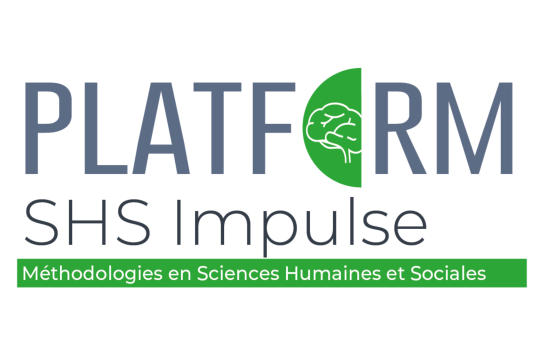
New impetus for the humanities and social sciences at UNamur
New impetus for the humanities and social sciences at UNamur
A new platform dedicated to research in the humanities and social sciences (SHS) is being launched at UNamur. The aim? To offer SHS researchers methodological support tailored to their needs and strengthen SHS excellence at UNamur. This platform, SHS Impulse, will provide various services such as financial support for training, consultancy, access to resources, or co-financed software purchases.
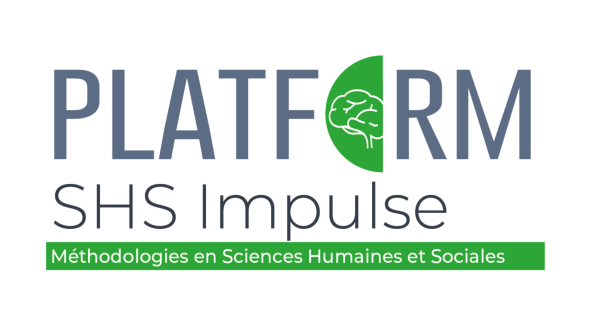
Whether it concerns linguistics, economics, politics, sustainable development, law, history, educational sciences, literature or translation, research in the humanities and social sciences is as eclectic as it is rich and essential for tackling society's challenges. Of UNamur's eleven research institutes, seven are directly involved in SHS research. While there is a high degree of complementarity in these areas of research, better pooling of resources, sharing and easier access to certain services, resources and support will help to sustain and strengthen the excellence of SHS research at UNamur. It is with this in mind that the SHS impulse platform has just been created.
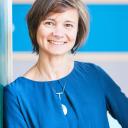
We started from the needs of SHS researchers to establish four axes developed within this platform
.
Resources organized around 4 axes
- Axis 1 - Support for the acquisition of databases, documentary resources and software
- Axis 2 - Subsidy for cutting-edge training in the use of specialized methods
- Axis 3 - Funding access to the SMCS "Support en Méthodologie et Calcul Statistique" platform at UCLouvain, thanks to an inter-university partnership.
- Axis 4 - Setting up an SHS space, containing a laboratory for running experiments and shared work tools promoting exchanges between researchers.
Outlook
This initiative, launched in January 2025, addresses the specific challenges faced by SHS researchers. The long-term aim is to sustain and expand the services. "We will also hire a researcher expert in methodological analysis in SHS who will be able to inform innovative methodologies and frame the methodological design of research projects," emphasizes Sandrine Biémar, vice-dean of UNamur's Faculty of Education and Training Sciences, a member of the IRDENA institute and the SHS Impulse management committee. "The wish is also to support networking between SHS researchers at UNamur and to be a lever for setting up interdisciplinary projects," adds Sandrine Biémar.
The platform's management team is made up of representatives of the university's various SHS institutes, and ensures efficient management of resources. The platform's impact will be assessed during its initial phase (2025-2027), enabling strategies for its sustainability and development to be defined.

28 new research projects funded by the FNRS
28 new research projects funded by the FNRS
The F.R.S.-FNRS has just published the results of its various 2025 calls for proposals. These include the "Credits & Projects" and "WelCHANGE" calls, as well as the "FRIA" (Fund for Research Training in Industry and Agriculture) and "FRESH" (Fund for Research in the Humanities) calls, which aim to support doctoral theses. What are the results for UNamur? Twenty-eight projects have been selected, demonstrating the quality and richness of research at UNamur.

The "Credits & Projects" call for proposals resulted in 12 grants being awarded for ambitious new projects. These include two "equipment" grants, eight "research credits (CDR)" grants, and two "research projects (PDR)" grants, one of which is in collaboration with the ULB. The FRIA call for doctoral research support will fund eleven doctoral scholarships and the FRESH call will fund three.
Two prestigious Scientific Impulse Mandates (MIS) were also obtained. This three-year funding supports young permanent researchers who wish to develop an original and innovative research program by acquiring scientific autonomy within their department.
We would also like to highlight the two projects funded under the "WelCHANGE" call, a funding instrument for research projects with potential societal impact, led by a principal investigator in the humanities and social sciences.
Detailed results
Call for Equipment
- Xavier De Bolle, Narilis Institute, Co-promoter in collaboration with UCLouvain
- Luca Fusaro, NISM Institute
Call for Research Grants (CDR)
- Marc Hennequart, NARILIS Institute
- Nicolas Gillet, NARILIS Institute
- Jean-Yves Matroule, NARILIS Institute
- Patricia Renard, NARILIS Institute
- Francesco Renzi, NARILIS Institute
- Stéphane Vincent, NISM Institute
- Laurence Meurant, NaLTT Institute
- Emma-Louise Silva, NaLTT Institute
Call for Research Projects (PDR)
- Jérémy Dodeigne, Transitions Institute, Co-supervisor in collaboration with ULB
- Luc Henrard, NISM Institute; Co-supervisor: Yoann Olivier, NISM Institute
Fund for Training in Research in Industry and Agriculture (FRIA)
- Emma Bongiovanni - Supervisor: Catherine Michaux, NISM Institute
- Simon Chabot - Supervisor: Carine Michiels, Narilis Institute; Co-supervisor: Anne-Catherine Heuskin, Narilis Institute
- Lee Denis - Supervisor: Muriel Lepère, ILEE Institute
- Maé Desclez - Supervisor: Johan Yans, ILEE Institute; Co-supervisor: Hamed Pourkhorsandi (University of Toulouse)
- Pierre Lombard - Supervisor: Benoît Muylkens, Narilis Institute; Co-supervisor: Damien Coupeau, Narilis Institute
- Amandine Pecquet - Supervisor: Nicolas Gillet, Narilis Institute; Co-supervisor: Damien Coupeau, Narilis Institute
- Kilian Petit - Supervisor: Henri-François Renard, Narilis Institute; Co-supervisor: Xavier De Bolle, Narilis Institute
- Simon Rouxhet - Supervisor: Catherine Michaux, NISM Institute; Co-supervisor: Nicolas Gillet, Narilis Institute
- William Soulié - Supervisor: Yoann Olivier, NISM Institute
- Elisabeth Wanlin - Supervisor: Xavier De Bolle, Narilis Institute
- Laura Willam - Supervisor: Frédérik De Laender, ILEE Institute
Fund for Research in the Humanities (FRESH)
- Louis Droussin - Supervisor: Arthur Borriello, Transitions Institute; Co-supervisor: Vincent Jacquet, Transitions Institute
- Nicolas Larrea Avila - Supervisor: Guilhem Cassan, DeFIPP Institute
- Victor Sluyters – Supervisor: Wafa Hammedi, NADI Institute
- Amandine Leboutte - Co-supervisor: Erika Wauthia (UMons); Co-supervisor: Cédric Vanhoolandt, IRDENa Institute.
Scientific Impulse Mandate (MIS)
- Charlotte Beaudart, Narilis Institute
- Eli Thoré ILEE Institute
WelCHANGE Call
- Nathalie Burnay Transitions Institute, in collaboration with UCLouvain
- Catherine Guirkinger, DeFIPP Institute
Congratulations to all!

UNamur and UCLouvain win awards for sign language training
UNamur and UCLouvain win awards for sign language training
This is a great reward for the Interuniversity Certificate in Sign Language and French: it has just been distinguished by the European Innovative Teaching Award (EITA) in the "European Language Label" category.

This prestigious prize, awarded by the European Commission, recognizes educational projects that promote innovative, inclusive and collaborative teaching practices. In 2025, only 117 projects were selected across Europe, including three in the Wallonia-Brussels Federation.
The award-winning project concerns the Certificat interuniversitaire en Langue des signes de Belgique francophone (LSFB) et français, co-organized by UNamur and UCLouvain Saint-Louis Bruxelles and supported by the Université de Toulouse Jean Jaurès (UTJJ) thanks to Erasmus+ funding. Running from September 2023 to June 2024, it aims to professionalize deaf interpreters in French-speaking Belgium and France, by offering them a unique training course leading to certification. Thanks to an innovative pedagogical approach, combining formal, non-formal and informal learning, 19 deaf adults were able to obtain certification, strengthening their professional recognition and role in society.
"We implemented this certificate because of the urgency and need to develop continuing education for deaf interpreters in French-speaking Belgium and the necessary reflection on the new profession of deaf interpreter in France," emphasizes Professor Dany Etienne (UCLouvain Saint-Louis Bruxelles), Dean of the Marie Haps Faculty of Translation and Interpreting.
"Deaf interpreters in Belgium are often self-trained, with no official recognition, which limits their professionalization and affects the services offered to deaf people. By integrating knowledge and tools from other universities, we have been able to develop suitable training, guaranteeing professionalism and ethics, in order to improve the quality of interpreting services and encourage recognition of the profession," adds Professor Laurence Meurant (UNamur).
This project thus marks a first in Belgium and France, filling a major gap in the training of deaf interpreters. It paves the way for better quality interpreting services and official recognition of the profession.
An exemplary university collaboration
The complementary expertise of the three partners has enabled the development of a unique training program of excellence:
- The research into the linguistic study of LSFB at UNamur conducted in collaboration with the ASBL École et surdité and the Centre scolaire Sainte-Marie Namur.
- Research and practice in the field of co-interpretation for UCLouvain Saint-Louis Bruxelles.
- Translation didactics for UTJJ.
This collaborative work has made it possible to develop tailor-made modules, adapted to the specific needs of deaf learners, and to create transnational links with experts in the UK, USA and Germany.
Find out more
- About the certificate in Interuniversity Certificate in Sign Language of French-speaking Belgium (LSFB) and French
- About the Laboratoire de langue des signes de Belgique francophone (LSFB-Lab)
- On the French-LSFB bilingual dictionary
This is also a project to support ! More info: https://unamur.be/fr/soutenir/lsfb
This project was made possible thanks to co-financing from the European Union.


UNamur active in the Relief network: new collaborations planned
UNamur active in the Relief network: new collaborations planned
It's official: the University of Namur joins the Réseau d'Échanges et de Liaisons entre Institutions d'Enseignement Supérieur Francophones (RELIEF). It thus becomes the fourth partner in this network, alongside the Université du Québec à Trois-Rivières (UQTR), the Université Savoie Mont Blanc and the Haute École Spécialisée de Suisse Occidentale (HES-SO).

In late October, Rector Annick Castiaux, accompanied by Vice-Rector for International Relations and Cooperation Stéphane Leyens, visited Université Savoie Mont Blanc. The aim: to identify opportunities for bilateral collaboration between the two institutions.
Professors Denis Saint-Amand (Faculty of Philosophy and Letters, President of the Namur Institute of Language and Transmediality) and Johan Yans (Director of the Department of Geology and President of the Institute of Life,Earth and Environment) were also part of the UNamur delegation. Université Savoie Mont Blanc was represented by its President, Philippe Briand, as well as Mareva Sabatier (Vice-President of the Board of Directors, in charge of personnel), Pascal Hot (Vice-President in charge of research) and Emilie Viret-Thasiniphone (Director of International Relations).
Meetings were held with representatives from various institutes and laboratories: mathematics, physics, earth science and geology, business administration, literature. Opportunities for collaboration in these fields were discussed.
Relief: A strategic opportunity for UNamur
The RELIEF Network (Réseau d'Échanges et de Liaisons entre Institutions d'Enseignement Supérieur Francophones) brings together four universities: the UNamur, the Université Savoie Mont Blanc, the Université du Québec à Trois-Rivières (UQTR) as well as the Haute École Spécialisée de Suisse Occidentale (HES-SO).
Created in 2015, the RELIEF network aims to:
- Foster exchanges and interactions between partner institutions;
- Develop high-quality joint projects on an international scale, particularly in the French-speaking world, for students and teacher-researchers;
- Strengthen the visibility and impact of initiatives carried out by the network and its members.
Invited to join RELIEF in 2025, UNamur looks forward to this integration.

This is a great opportunity for our university to strengthen existing collaborations, initiate new ones and promote UNamur's expertise within a French-speaking space of innovation, training and research
.
Read more :

New impetus for the humanities and social sciences at UNamur
New impetus for the humanities and social sciences at UNamur
A new platform dedicated to research in the humanities and social sciences (SHS) is being launched at UNamur. The aim? To offer SHS researchers methodological support tailored to their needs and strengthen SHS excellence at UNamur. This platform, SHS Impulse, will provide various services such as financial support for training, consultancy, access to resources, or co-financed software purchases.

Whether it concerns linguistics, economics, politics, sustainable development, law, history, educational sciences, literature or translation, research in the humanities and social sciences is as eclectic as it is rich and essential for tackling society's challenges. Of UNamur's eleven research institutes, seven are directly involved in SHS research. While there is a high degree of complementarity in these areas of research, better pooling of resources, sharing and easier access to certain services, resources and support will help to sustain and strengthen the excellence of SHS research at UNamur. It is with this in mind that the SHS impulse platform has just been created.

We started from the needs of SHS researchers to establish four axes developed within this platform
.
Resources organized around 4 axes
- Axis 1 - Support for the acquisition of databases, documentary resources and software
- Axis 2 - Subsidy for cutting-edge training in the use of specialized methods
- Axis 3 - Funding access to the SMCS "Support en Méthodologie et Calcul Statistique" platform at UCLouvain, thanks to an inter-university partnership.
- Axis 4 - Setting up an SHS space, containing a laboratory for running experiments and shared work tools promoting exchanges between researchers.
Outlook
This initiative, launched in January 2025, addresses the specific challenges faced by SHS researchers. The long-term aim is to sustain and expand the services. "We will also hire a researcher expert in methodological analysis in SHS who will be able to inform innovative methodologies and frame the methodological design of research projects," emphasizes Sandrine Biémar, vice-dean of UNamur's Faculty of Education and Training Sciences, a member of the IRDENA institute and the SHS Impulse management committee. "The wish is also to support networking between SHS researchers at UNamur and to be a lever for setting up interdisciplinary projects," adds Sandrine Biémar.
The platform's management team is made up of representatives of the university's various SHS institutes, and ensures efficient management of resources. The platform's impact will be assessed during its initial phase (2025-2027), enabling strategies for its sustainability and development to be defined.
Les thématiques de recherche
- Pratiques langagières, politique et planification linguistiques en contexte multilingue
- Propriétés structurelles et discursives des constructions linguistiques et des variétés linguistiques
- Multilinguisme et apprentissage d’une langue
- Traduction et hétérolinguisme comme manifestations du contact linguistique et du transfert interculturel
- Littérature, société et transmédialité
- Pratiques et concepts littéraires à travers les temps et les espaces
Contact
Pour toute question : info.naltt@unamur.be





